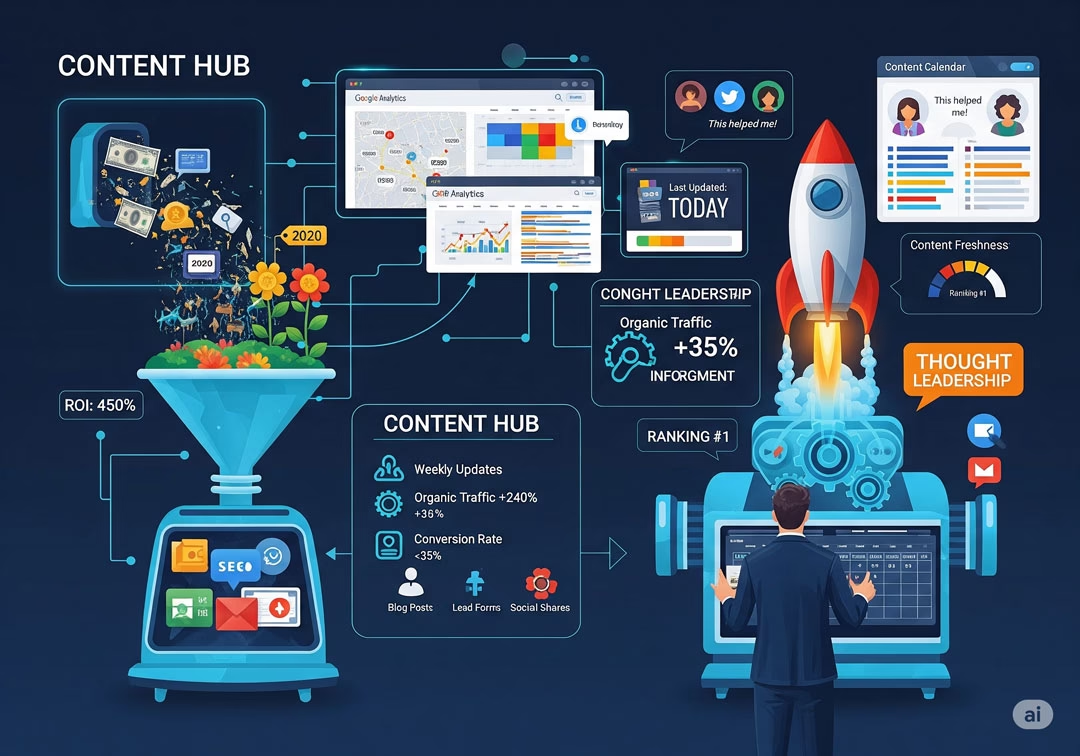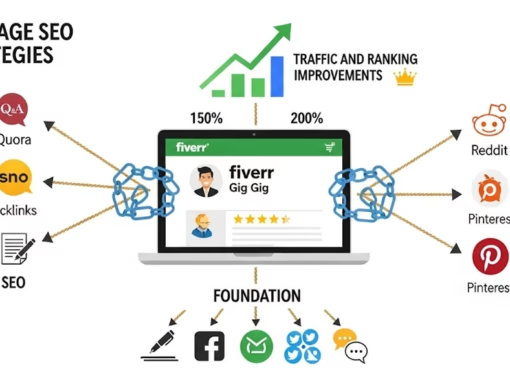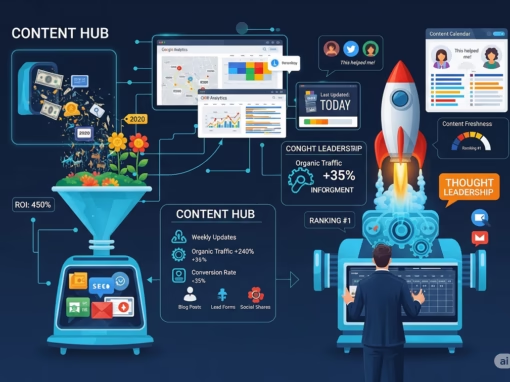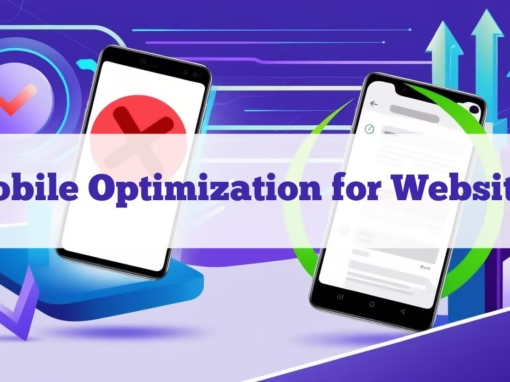1. Why Regular Website Updates Are a Strategic Imperative
In today’s fast-paced digital landscape, a robust and dynamic website content strategy is no longer just an option – it’s a necessity for business success. Many organizations strive to build trust, improve their SEO, and drive impactful business results, but often overlook a critical component: the consistent upkeep and revitalization of their online content. This article will explore why regularly updating your website’s content is paramount to staying competitive and achieving sustainable growth in the digital realm.
Studies have repeatedly shown that companies that engage in regular content updates are more likely to rank higher on search engine results pages (SERPs). For example, businesses that update their websites consistently can see organic traffic improvements in the range of 20% to 50% over time. Updating content is not merely an exercise in aesthetics; it is a strategic imperative designed to strengthen customer trust, enhance user experience, and drive more qualified leads.
Thus, for business leaders looking to secure a competitive digital presence, ensuring that their website remains current is a critical step toward long-term success.
Table of Contents
- Why Regular Website Updates Are a Strategic Imperative
- Understanding Content Management: Beyond the Basics
- The Business Benefits of Maintaining Fresh Content
- Identifying What Content to Update—and When
- A Step-by-Step Guide to Planning Your Content Updates
- Leveraging a Blog or News Section for Competitive Advantage
- Essential Tools for Efficient Content Management
- Common Pitfalls and How to Avoid Them
- Real-World Case Studies: Smart Content Updating in Action
- Conclusion: Strategic Next Steps for Your Digital Future
2. Understanding Content Management: Beyond the Basics
When many business owners hear the term “content management,” the immediate thought might be about basic webpage editing. However, content management today is a comprehensive, strategy-driven process that involves:
- Continuous Evaluation: Regularly auditing your website for outdated or inaccurate information.
- Strategic Updates: Adjusting content to reflect market changes, evolving customer needs, and emerging industry trends.
- Cross-Channel Coordination: Ensuring that updates on your website are in harmony with your email campaigns, social media posts, and other marketing initiatives.
Modern Content Management Systems (CMS) such as WordPress, Wix, or Squarespace have revolutionized this process. They allow businesses to quickly update content without deep technical know-how, integrating seamlessly with various digital marketing tools. As you become more adept in using these platforms, you can transform content management from a periodic task into an ongoing strategic practice that adds tangible value to your brand.
3. The Business Benefits of Maintaining Fresh Content
Regular updates, as part of a comprehensive Website Content Strategy, bring a myriad of benefits, all of which contribute to a more robust business model.
Better Search Engine Rankings
Search engines reward relevance. Pages that are updated with fresh, timely information signal to engines like Google that your website is actively maintained—even if the core content remains evergreen. Recent analyses indicate that websites updating their content at least monthly can enjoy up to a 50% improvement in page ranking metrics, directly impacting organic search visibility.
Enhanced Trust and Professional Credibility
When your visitors see up-to-date content, they perceive your business as engaged and reliable. Outdated information can be a barrier to conversion, as it often gives the impression that the business is inactive or out of touch with current market trends. A Harvard Business Review study found that credible, consistent messaging across digital touchpoints increases trust, leading to higher customer conversion rates.
Superior User Experience
A website that offers accurate and current information improves usability and customer satisfaction. Updated content ensures that customers always have access to the latest data, be it new product information, pricing updates, or event notices. This proactive approach not only reduces the number of customer service inquiries but also enhances the overall user experience.
Increased Engagement and Marketing Opportunities
Fresh content yields more material to share via social media, email newsletters, and other channels. This can boost engagement levels significantly. In fact, companies that consistently update their blogs and news sections are more likely to see higher engagement rates—some studies reveal increases of over 30% in customer interactions compared to businesses with stagnant content.
Streamlined Maintenance and Reduced Overhaul Costs
Regular content updates help with the ongoing maintenance of your digital assets. For example, catching broken links or outdated images early can prevent larger issues that might require a complete site overhaul. By integrating a routine update process, you minimize the risk of technical debt accumulation and ensure a smoother user experience across the board.
4. Identifying What Content to Update—and When
A strategic content update plan begins with understanding which parts of your website need frequent attention. Not all content holds the same weight in terms of customer perception or SEO performance. Here’s how to prioritize:
Content That Requires Frequent Updates
- Homepage Messaging: Your homepage should reflect current promotions, services, and market situations.
- Blog Posts & Articles: Regularly updated posts that reflect industry trends and new insights can significantly enhance your authority.
- News and Announcements: Vital for keeping customers informed about new offerings, events, and operational changes.
- Product or Service Pages: Accurate descriptions, pricing, and availability are essential for maintaining customer trust.
- Testimonials and Client Reviews: Updated social proof helps to reinforce your brand’s credibility.
- Contact Information: Always ensure that your contact details are accurate and current.
Content for Periodic Reviews (Every Few Months)
- About Us Page: As your organization evolves, updating your company profile helps ensure that your brand story remains relevant.
- Frequently Asked Questions (FAQs): This section should reflect evolving customer queries and new product features.
- Policy Pages: Regularly update pricing policies, refund terms, and privacy statements to remain compliant and transparent.
Evergreen Content That Still Needs Occasional Updates
Even content that is considered timeless requires periodic review to remain accurate and visually appealing:
- Statistics: Ensure that any data cited is current and relevant.
- Visual Assets: Replace outdated images or videos with fresher, high-quality content.
- Grammar and Readability: Reassess for clarity and update any language that may no longer resonate with your target audience.
A survey by the Content Marketing Institute found that updating evergreen content can boost organic traffic by up to 111%, reaffirming the importance of periodic reviews even for well-performing content.
5. A Step-by-Step Guide to Planning Your Content Updates
Formulating an effective Website Content Strategy for updates doesn’t require a large budget or a dedicated team of writers. What it does require is a clear plan of action. Below is a systematic approach to guide your efforts:
Step 1: Conduct a Content Audit
Begin by thoroughly reviewing your website. Create an inventory of all pages, blog posts, and static content. For each item, assess its current relevance, accuracy, and performance. Consider questions such as:
- Is the information still accurate and aligned with current business offerings?
- Does the content mirror the latest industry trends or internal changes?
- Can the content be enhanced to provide a better user experience?
A comprehensive content audit lays the foundation for identifying key areas that need immediate attention.
Step 2: Develop a Content Calendar
A content calendar is indispensable when it comes to organizing updates and new content initiatives. Use simple tools like Google Sheets or project management platforms like Trello to create a timeline. Your calendar should include:
- Blog post topics and deadlines.
- Scheduled reviews for static pages, including promotions and informational content.
- Key dates for seasonal promotions or industry events.
Planning ahead with a content calendar ensures that updates are consistent rather than sporadic, reducing the risk of large-scale overhauls.
Step 3: Set Regular Reminders and Checkpoints
Decide on the frequency of your updates—be it weekly, monthly, or quarterly. Set calendar reminders for each update cycle. By treating content updates as recurring meetings, you can maintain a steady cadence of revision and enhancement.
Step 4: Divide and Conquer
If your website requires significant changes, break the tasks down into manageable projects. Start with the most frequently visited pages—typically the homepage and service pages—and gradually evolve through other content areas. This incremental approach minimizes overwhelm and drives better overall results.
Considering that businesses that adopt structured content update processes report up to a 20% increase in conversion rates, a methodical approach is well worth your investment.
6. Leveraging a Blog or News Section for Competitive Advantage
In the digital age, a consistently updated blog or news section is more than just a content repository; it is a dynamic platform to showcase your expertise and engage your audience. Here’s how a well-maintained blog can drive business success:
The Advantages of a Dedicated Blog Section
- Enhanced SEO: Fresh, topic-relevant blog posts can signal to search engines that your website is alive. Data indicates that companies that post regularly are 13 times more likely to see positive SEO results than those that don’t.
- Thought Leadership: Regular articles allow you to present insights, market analyses, and expert advice, positioning your business as an industry authority.
- Customer Engagement: A blog offers a space to address customer queries, share success stories, and offer practical advice that resonates with your audience.
- Content Sharing: Quality blog content provides ready-to-share material for your social media platforms, newsletters, and email marketing campaigns—amplifying your overall reach.
Content Ideas to Inspire Regular Posting
For businesses new to content creation, here are some professional yet accessible topics:
- Industry Analysis: Offer detailed insights backed by the latest data and industry trends.
- Customer Case Studies: Share how your products or services have resolved client challenges.
- How-to Guides: Provide step-by-step instructions that educate your audience on best practices.
- Corporate Announcements: Use the blog to deliver significant company updates, product launches, or partnership news.
- Market Trends: Write opinion pieces on emerging market trends and their potential implications for your customers.
By repurposing content and leveraging insights from your existing marketing data, you can build a blog that not only drives traffic but also converts visitors into loyal customers.
7. Essential Tools for Efficient Content Management
In the digital marketing arsenal, the right tools can transform a chaotic update process into a structured, efficient workflow. Here are some recommended solutions:
Content Management Systems (CMS)
- WordPress: Highly customizable with a robust plugin ecosystem for SEO and scheduling.
- Wix: User-friendly platform focusing on responsive design.
- Squarespace: Ideal for visually appealing, design-centric websites.
Content Planning and Scheduling Tools
- Google Sheets: A versatile tool for creating and sharing content calendars.
- Trello: Utilizes visual boards to track progress, assign tasks, and set deadlines.
- Notion: Combines note-taking, task management, and content planning into one intuitive platform.
SEO and Analytics Tools
- Yoast SEO (WordPress): Provides on-page SEO recommendations and readability analysis.
- Google Analytics: Essential for tracking website traffic, user behavior, and conversion rates.
- Google Search Console: Monitors website performance, indexing issues, and search queries.
Writing and Editing Tools
- Grammarly: Ensures that your copy is grammatically accurate and professionally worded.
- Hemingway Editor: Helps refine readability tones, ensuring your content is clear, concise, and accessible to a professional audience.
By leveraging these tools, businesses can maintain a consistent update schedule that translates into measurable improvements in performance metrics.
8. Common Pitfalls and How to Avoid Them
Even experienced teams may fall prey to common content management mistakes. Awareness and proactive planning can substantially reduce these issues.
Pitfall 1: Allowing Content to Age Unnoticed
The Issue: Letting content languish without regular reviews can lead to multiple inaccuracies and broken links. The Solution: Implement a content audit process every quarter. Use automated tools to scan for broken links and outdated references.
Pitfall 2: Writing Solely from a Corporate Perspective
The Issue: Content that is overly self-promotional often fails to engage or inform the reader. The Solution: Prioritize audience needs by crafting content that addresses pain points, offers actionable advice, and demonstrates clear value beyond promoting your products or services.
Pitfall 3: Neglecting Mobile Optimization
The Issue: With mobile devices accounting for more than 50% of all website traffic, a non-responsive site jeopardizes user engagement. The Solution: Test periodically on multiple devices, and ensure that each update adheres to best practices for mobile design.
Pitfall 4: Skipping SEO Optimization
The Issue: Failing to optimize updated content for relevant keywords can diminish its chance of ranking within SERPs. The Solution: Integrate SEO best practices during every revision cycle. Use tools like Yoast SEO and monitor results via Google Search Console to remain ahead of the curve.
Pitfall 5: Trying to Perfect Before Publishing
The Issue: Waiting for flawless perfection can lead to missed opportunities and delays in content dissemination. The Solution: Adopt an agile content strategy—publish, analyze, then iterate. This approach not only speeds up delivery but also allows you to refine based on real-time user feedback.
By avoiding these pitfalls, your website’s content strategy will remain resilient, effective, and aligned with your broader business goals.
9. Real-World Case Studies: Smart Content Updating in Action
To illustrate the transformative power of regular content updates, let’s examine several real-world examples from diverse industries.
Case Study 1: A Local Bakery
A neighborhood bakery has integrated a systematic update process for its website:
- Homepage Updates: Weekly changes highlight seasonal offerings and promotions.
- Blog Integration: A monthly blog featuring baking tips, customer testimonials, and event announcements.
- Outcome: The bakery reported a 35% increase in foot traffic attributed to improved online visibility and timely communication of new offerings.
Case Study 2: A Freelance Web Designer
A freelance professional revamped their online portfolio by:
- Periodic Portfolio Updates: Refreshing case studies and showcasing new projects every two months.
- Ongoing Blog Posts: Covering industry best practices and innovative design trends.
- Outcome: The designer saw a notable uptick in client inquiries and secured higher-profile projects, correlating with a more dynamic, up-to-date portfolio.
Case Study 3: A Boutique Fitness Studio
By adopting regular content updates, a fitness studio managed:
- Monthly Class Schedules: Updating class timetables and instructor highlights on their website.
- Video Content: Incorporating short, instructional videos to engage members.
- Outcome: This approach built a stronger community connection, with reported increases in both web engagement and class sign-ups of over 25%.
These case studies clearly demonstrate how a proactive approach to content management, combined with regular updates, can directly influence business performance and customer engagement.
10. Conclusion: Strategic Next Steps for Your Digital Future
In summary, the digital success of any business today hinges on more than just initial website development. It requires an ongoing commitment to keeping your content fresh, relevant, and aligned with evolving market conditions. Regular content updates are a strategic investment that yields benefits in SEO performance, customer trust, and user engagement.
By embracing a comprehensive Website Content Strategy—anchored by methodical audits, a well-defined content calendar, and the right mix of tools—you position your business for long-term growth in a competitive digital landscape. Whether you’re updating marketing materials, refining product pages, or launching a new blog series, every incremental update contributes to your overall brand credibility and online performance.
For decision-makers and marketing teams alike, the message is clear: consistent, purposeful content updates are not optional; they are an essential component of your digital strategy. Begin today by identifying one small change you can implement on your homepage or blog post. Over weeks and months, these incremental advances will accumulate into a significant competitive advantage.
As you refine your content strategy, remain agile and data-driven—monitor performance metrics, gather user feedback, and adjust your approach as required. In doing so, you ensure that your website remains a powerful, trusted touchpoint for current and prospective customers.
Additional Insights and Moving Forward
While this guide outlines the core strategies for effective content updates, consider these additional insights:
- Data-Driven Decisions: Use analytics to pinpoint which pages or content types yield the best conversion rates and focus your update strategy accordingly.
- Seasonal Campaigns: Align content updates with seasonal trends and product launches to maximize impact.
- Content Repurposing: Leverage existing high-performing content by repurposing it into industry reports, infographics, or case studies to diversify your digital portfolio.
- Continuous Learning: Stay informed about the latest SEO practices, digital marketing trends, and technology updates to keep refining your content strategy.
Implementing a structured, ongoing content update strategy not only bolsters your brand’s online presence but also creates a culture of precision and proactivity.
In Conclusion, Regular website content updates are essential for maintaining and growing a competitive business digital presence. As researched and demonstrated by numerous industry studies, a proactive approach to content management directly correlates with improved search rankings, enhanced user trust, and increased engagement. By following the outlined strategy and avoiding common pitfalls, you will ensure that your website is always aligned with industry standards and customer expectations—driving sustainable business growth.
Embrace these best practices today, and watch as your fresh, authoritative content transforms your online presence into a dynamic resource that fuels ongoing business success.
By integrating this robust, strategic approach to content updates into your digital strategy, you can achieve a significant edge over competitors, ensuring your website remains a vibrant and effective platform for business success.









0 Comments